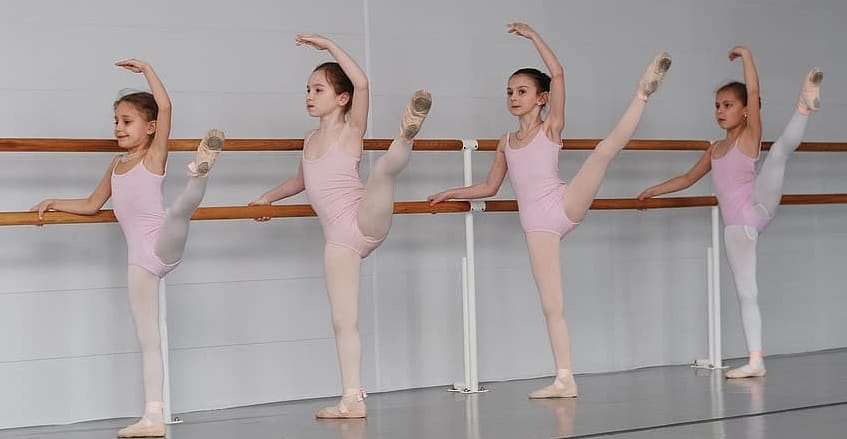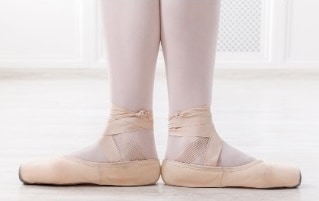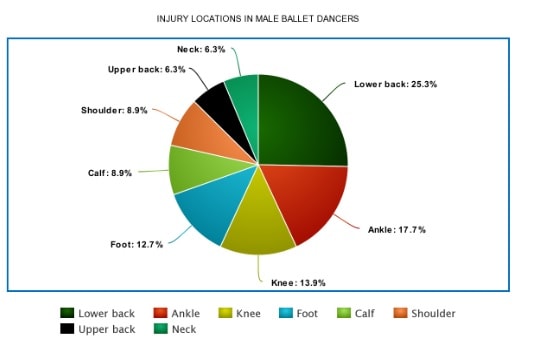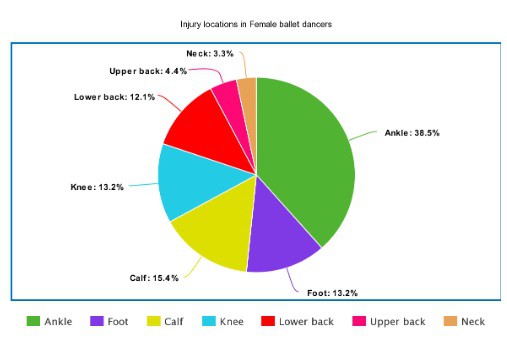
Dance, like any other sport, requires a lot of practice. Ballet being such an aesthetic form of dance, challenges the dancers strength and flexibility at all times. In order to obtain the perfect form, a ballet dancer puts the body through an exceptional amount of stress (physical and physiological). This repetitive work, started from a fairly young age, makes ballet dancers prone to overuse injuries.
Perfect form requires desirable range in the joints and muscles
Perfect form in ballet requires the dancer to have a desirable range in the joints and muscles; and the compensation from the lack of flexibility can put undue stress on joints/muscles and lead to injuries.

Perfectly Aligned Demi Pointe
For the perfectly aligned demi-pointe, a dancer needs to have:
-180 degree of ankle plantar flexion
-90 degree of great toe extension
-Strong hip external rotators
‘Plie’ is another essential movement in ballet. The dancer must have appropriate ankle dorsi-flexion range for plie and jumping/landing. Lack in the range leads to compensation from other joints which can be observed as rolling in of the feet, knees crossing the feet and anterior pelvic tilt.
TurnOut
Turnout is also considered a vital component in ballet; it gives a nicer line to the legs. Turnout requires external rotation of the lower limb (hip, knee, tibia, ankle, foot). 60% of this external rotation is caused by the hip and the rest 40% by the other joints. Research shows that reduced functional turnout and turnout compensation is associated with non-traumatic injuries. This limitation can be caused by bone shape, tightness in the hip joint capsule or ligaments and/or weakness/tightness in hip external rotators or tightness in hip internal rotators. A realistic angle for most dancers is considered to be 140 degrees.
Other factors can lead to an injury to a ballet dancer. Lumbar injuries are quite common in ballet and again, weakness in lower limb muscles or limitation in the joints can exaggerate lumbar extension leading to increased stress.
Hyper mobility in any area can lead to micro strains which can build up over time.

Injury Locations In Male Ballet Dancers

Injury Locations In Female Ballet Dancers
If you’re a ballet dancer and have sustained an injury and require more information or need further assistance you can press the button that’s below to make a booking at your local practice.
This blog was written by Nandini from City East Physio practice.